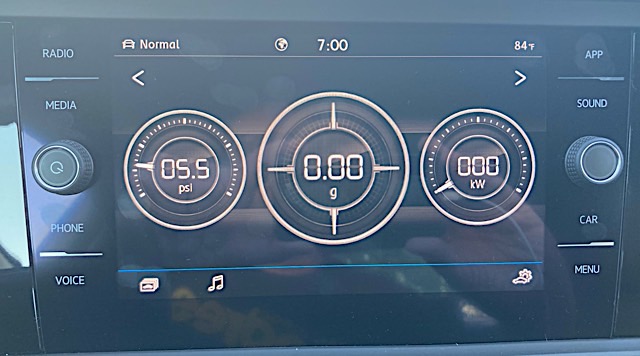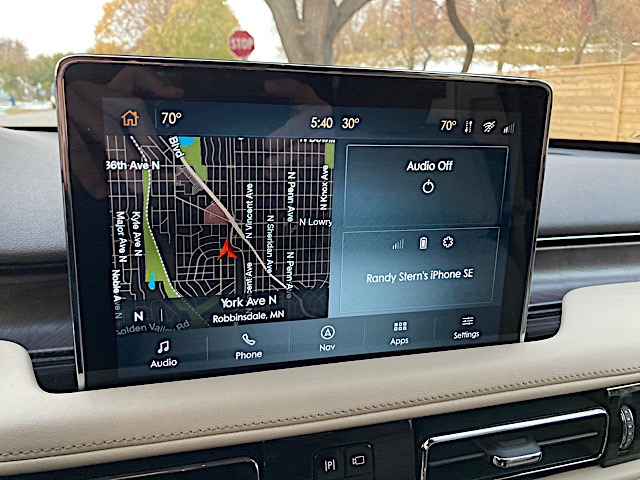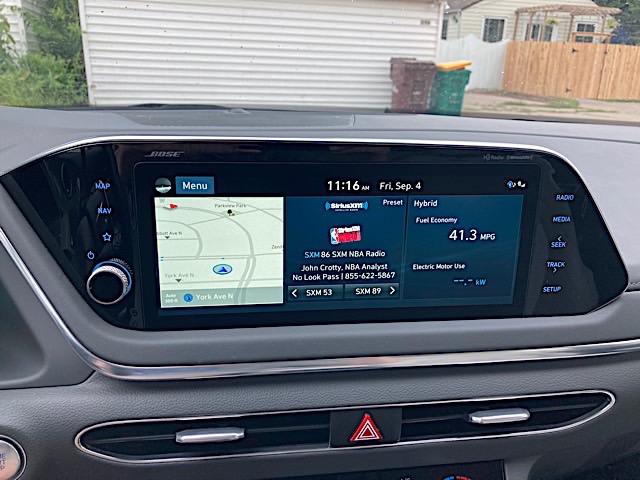Our Rides: What Is “Infotainment”

A few decades ago, we only turned on the radio to listen to music, news, and sports.
If we were lucky, we would pop in a cassette, an 8-track, or a CD to play our favorite albums. How else would you listen to Sylvester or Tret Frue?
There are only a few of us who remember these days. However, we are now faced with many options for listening to anything in our modern automobiles. Many options that were never thought of even ten or less years ago.
The system itself has undergone some name changes. What we used to call the radio was elevated to the “stereo,” and, subsequently, the “audio system.”
Nowadays, that screen in the center stack is called the “infotainment system.” It is the hub of not only radio or any form of playback as entertainment, but of information about your vehicle, navigation, and connectivity to your devices.
What has really changed over the years? A lot. Automotive manufacturers realize that you’re spending too much time in your vehicle and your habits have changed—since just drumming on the steering wheel no longer cuts it for being productive.
You’re on the phone in your vehicle more. You need directions to wherever you’re going. You need you get somewhere, but need a quicker route since Interstate 494 is still backed up at Interstate 35W, all the way to Minnesota Highway 100 – again.
Having all of this information in your vehicle has become critical to you. Therefore, the automotive manufacturers came up with several solutions that are integrated into today’s infotainment systems.
While there is a lot new on that screen—and around it—some things have not changed. Just optimized.
For example, the radio is still there. We can get our local AM and FM stations in our vehicle. In most new vehicles, these radio stations often have multiplex channels using HD Radio technology. Certain networks, such as Minnesota Public Radio, Entercom, and iHeartRadio, often cluster other related stations under a certain frequency and add additional channels underneath it. For example, if you tune to 97.1 on the FM dial, you find two-to-three additional stations that might be of interest to you, such as 97.1-1 or 97.1-2.
Terrestrial radio is now augmented by satellite radio, provided by SiriusXM. SiriusXM adds hundreds of channels to your audio setup with various programming suited to your listening needs and wants. Granted, there is no LGBTQ+ channel on the service anymore. We are represented on air, at least. Former OutQ station programmer Larry Flick can be found on a few channels either as a host of interview shows or as a frequent guest on several programs.
SiriusXM also has programming that is specific to BIPOC listeners. These channels offer a variety of programs of various ideas and languages. If you can’t find anything to listen to within the first 175 channels of the service, there are hundreds of others with a more specific focus in the extra channels that are either available through your vehicle, your smartphone app, or online.
Some infotainment systems will allow you to use a streaming service app direct from your phone either by itself or using a smartphone integration software, such as Apple CarPlay or Android Auto. Some systems will allow you to play your Pandora or Spotify playlist onto your vehicle either way.
Now that we brought up smartphone integration, Apple CarPlay and Android Auto simply layers over your infotainment system to draw music files and apps from your device. Not only music streaming apps and your device-specific music file/streaming service, but also drawing in podcasts and sports programming through a subscription from their respective league.
However, the main purpose of smartphone integration is to enable you to use the phone without having to pick up the device. With the rise in enforcement of laws against using the phone while driving—whether it is to make calls with the handset or picking it up to check texts, social media posts, and so forth—it makes more sense to use the infotainment screen and its functions to communicate smarter for work and your personal life.
It used to be that smartphone integration would require a plug-in through a USB port to your device. That has changed now with wireless smartphone connectivity. When you set up your phone through a Bluetooth connection, the wireless system will also detect either one of smartphone integration software, and connect accordingly.
Most likely, your vehicle will also have a wireless charging pad. If you have both wireless charging and smartphone integration, you could free up your USB ports for other devices.
In terms of navigation, you now have plenty of choices. For example, your vehicle may be equipped with a native navigation system integration onto their infotainment package. Sometimes, they are useful and precise. Yet, there are times when the software used on these native systems might be outdated and incorrect. You can pay for an upgrade—either directly through the vehicle’s connection to the internet or with a disc inserted into the vehicle.
If you don’t want to pay for that upgrade, you can easily use your smartphone’s app to get directions for you. Many drivers will tell you how Apple Maps, Google Maps, and Waze are great apps that work well
Lately, we’re seeing more vehicles adding a Wi-Fi hot spot into their infotainment systems. In some vehicles, the system allows you to connect multiple devices onto a high-speed mobile network. Most likely, they will require a monthly service fee through a designated mobile carrier, after a trial period.
Some infotainment systems act as a hub for multiple vehicle functions and settings. Depending on your vehicle, you can actually set up the time, the cabin mood color, the instrument functions, even the massage function on your seat.
That is exactly how the radio that used to sit in the middle of your dashboard evolved into a multifunctional, connected screen. You can do more now than you would have even dreamed of a decade or so ago. Of course, that also means adhering to the laws that keeps your hands off of your device while you’re driving.
Consider yourself completely connected to the world from behind your driver’s seat.
5200 Willson Road, Suite 316 • Edina, MN 55424
©2025 Lavender Media, Inc.
PICKUP AT ONE OF OUR DISTRIBUTION SITES IS LIMITED TO ONE COPY PER PERSON











